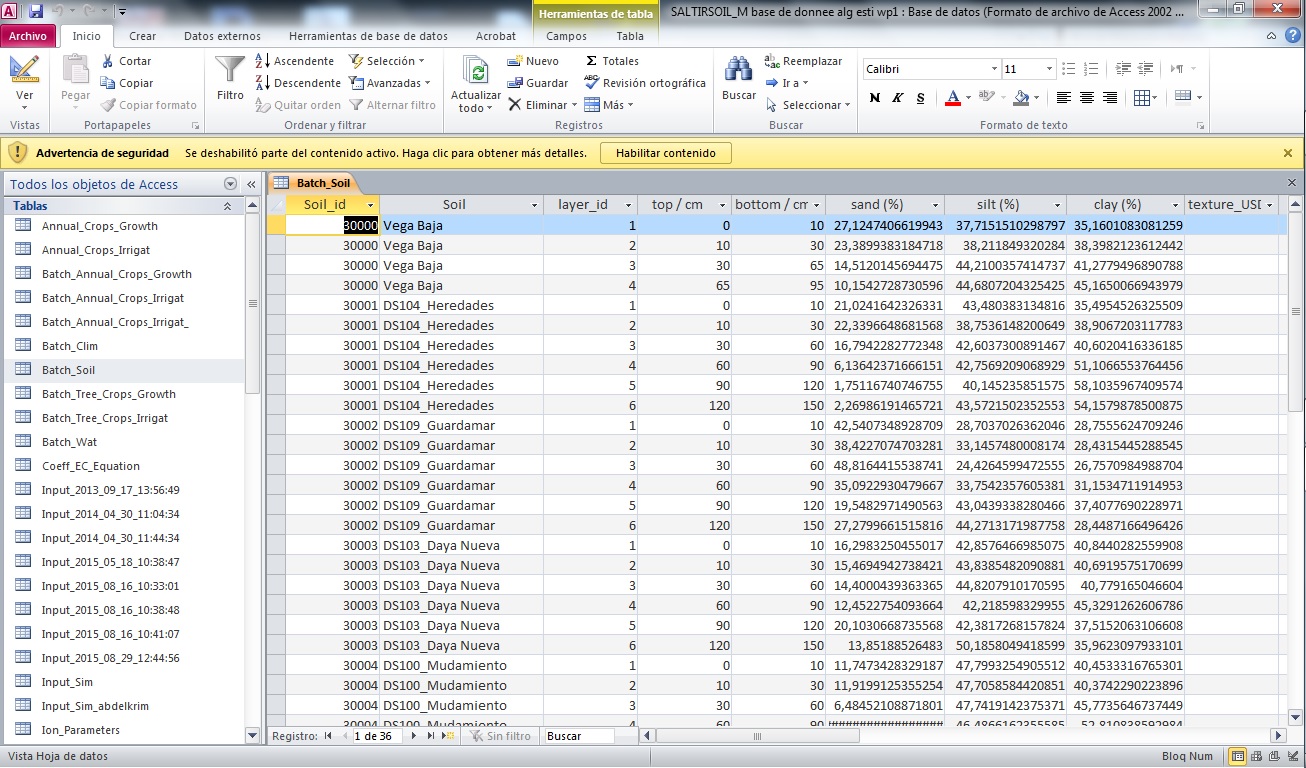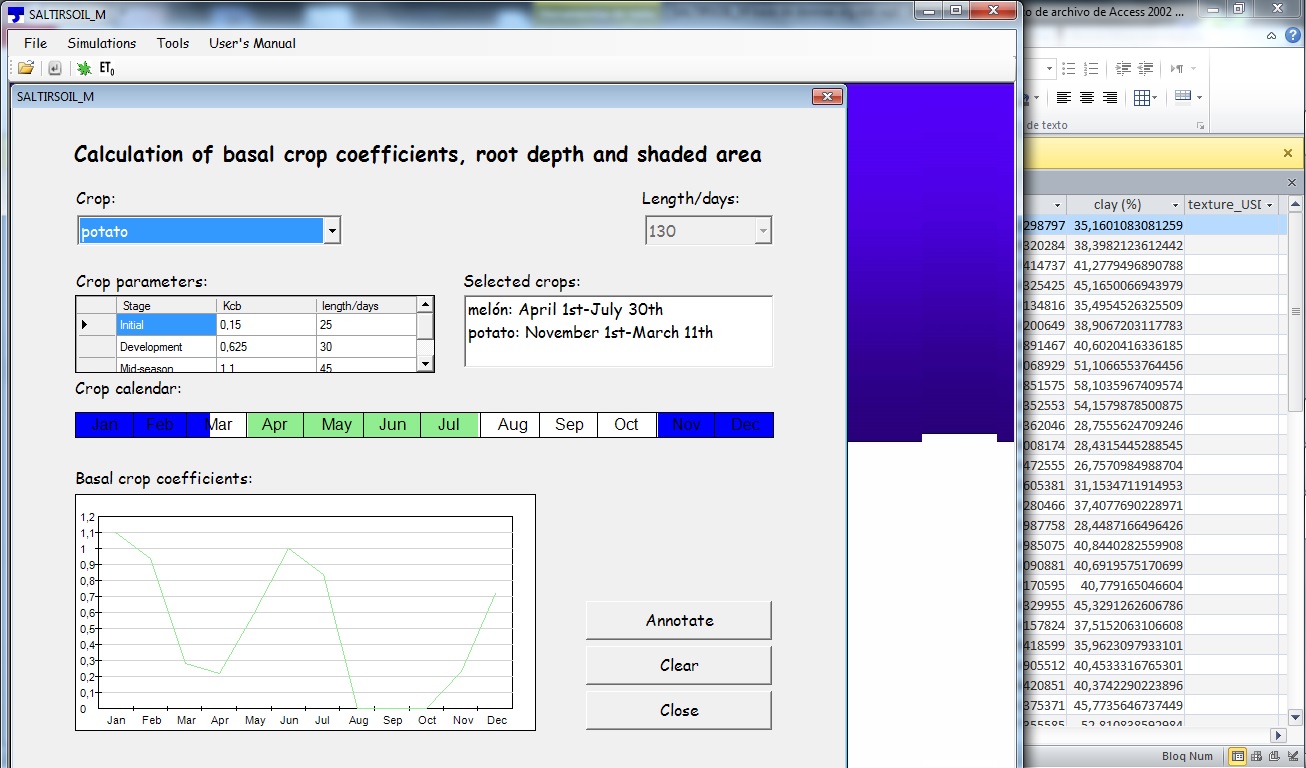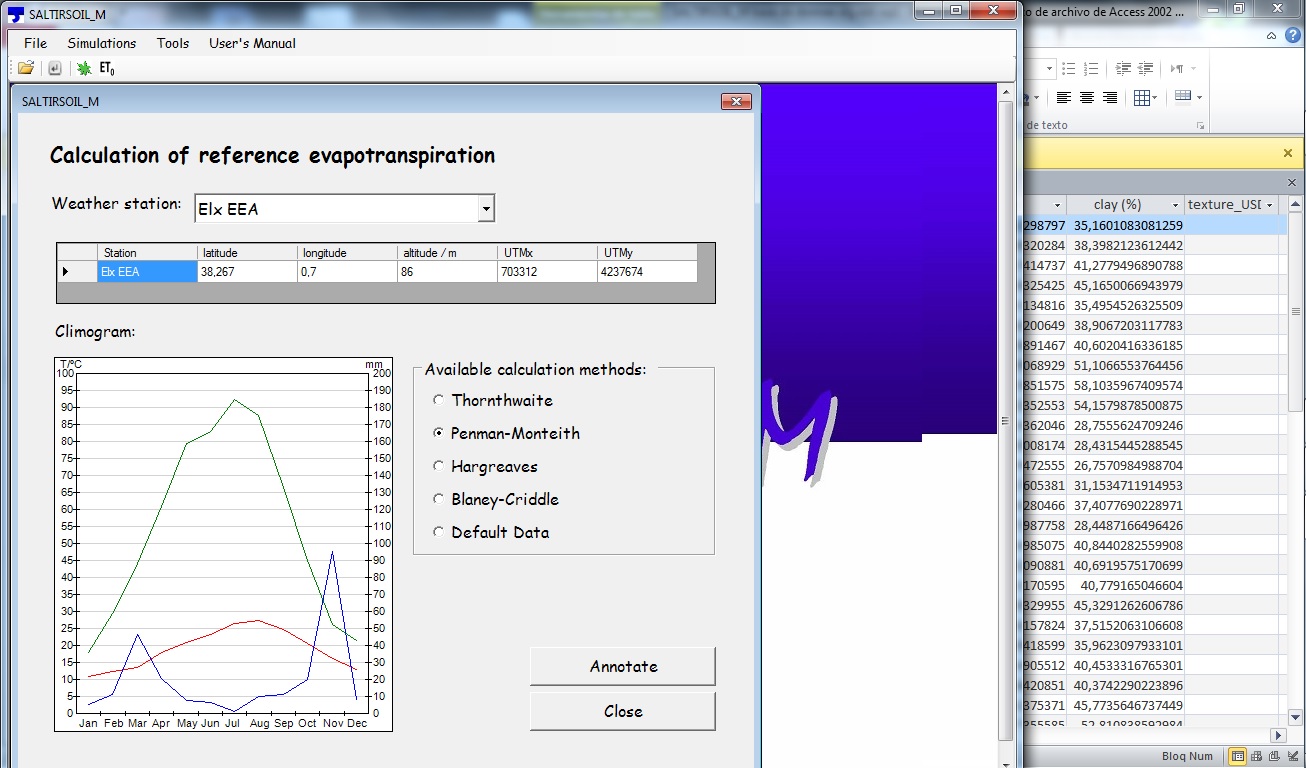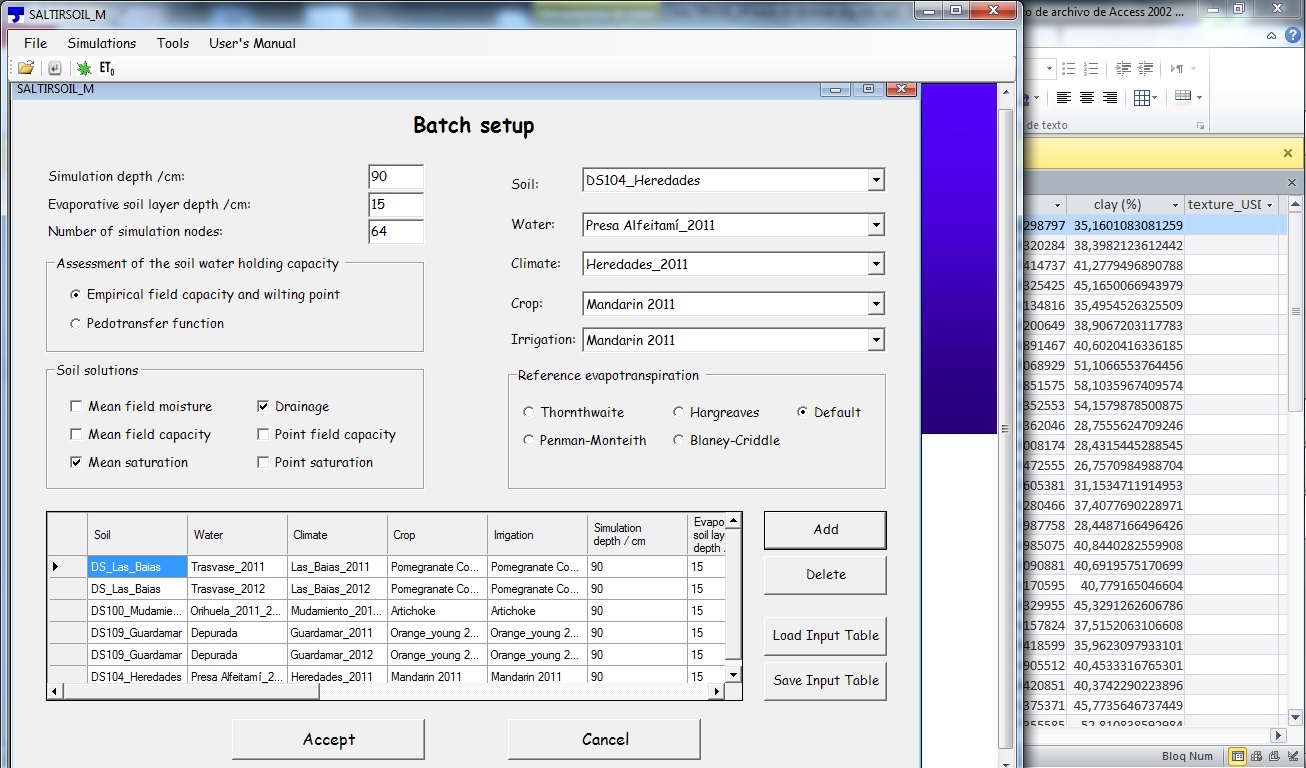SALTIRSOIL_M: an application to predict monthly soil salinity in irrigated well-drained lands
SALTIRSOIL_M (SALTs in IRrigated SOILs Monthly assessment) is a computer program developed to calculate the ionic composition and electrical conductivity of saline, calcareous and gypsiferous soil solutions in the mid to long term in irrigated well-drained lands. SALTIRSOIL_M uses weather, soil, crop, irrigation water quality and irrigation management data. From the information of rainfall, evapotranspiration, irrigation management and crop and soil properties SALTIRSOIL_M carries out a monthly water balance. From this balance it calculates a concentration factor of the soil solution regarding the irrigation water for each of the months of the year. The major ion composition of the irrigation water is multiplied by this factor to obtain the ion concentration of a solution far from equilibrium. This composition is used as input for the module SALSOLCHEM integrated into SALTIRSOIL_M, which calculates the composition of the soil solution in equilibrium with calcite and gypsum minerals at the apparent partial pressure of CO2 in the soil. SALTIRSOIL_M is written in Microsoft Visual Basic 2005 ©. The data needed to perform the simulations of soil salinity are stored in a database in Microsoft Access© distributed together with the application, and in which the user can enter new data or modify existing ones according to the simulations he/she wants to perform. The simulations are batch run.
The essential steps for running the SALTIRSOIL_M model are described below.
SALTIRSOIL_M is copyrighted software by the author, distributed free for research, management and educational purposes and downloadable here.
The SALTIRSOIL_M model has featured several research articles which can be accessed from this page.



